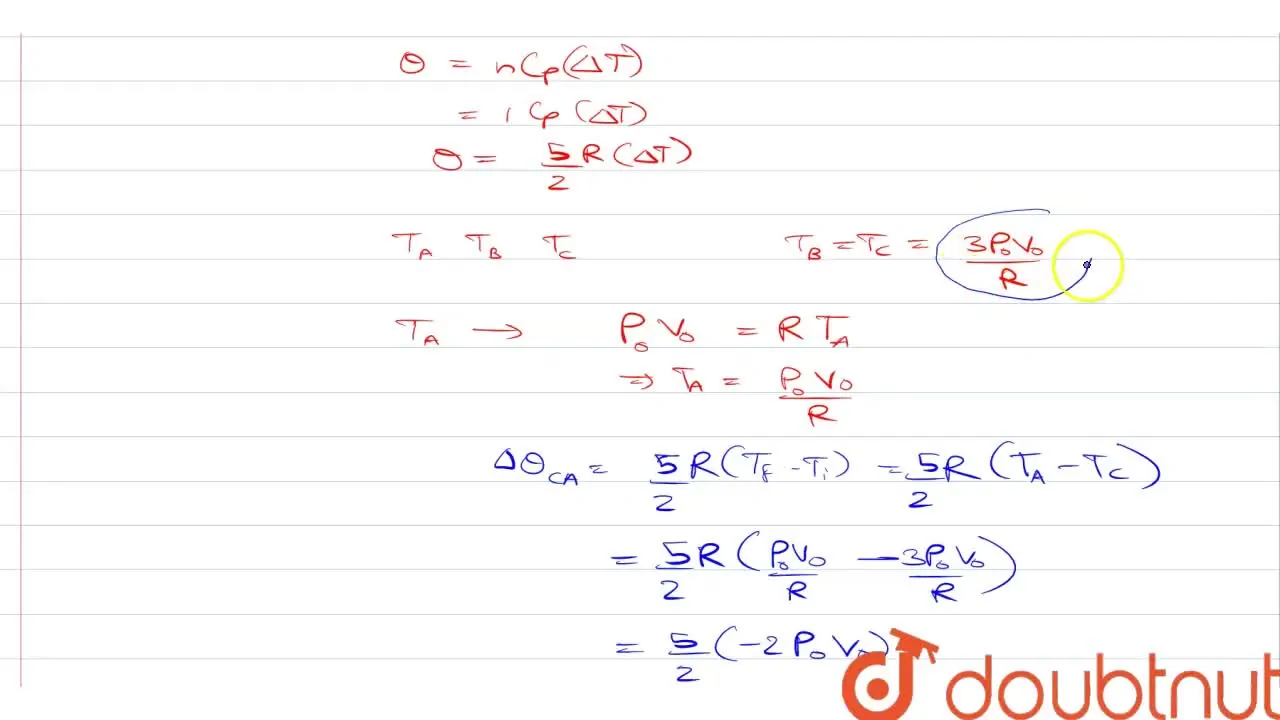One mole of an ideal monoatomatic gas is taken round the cylic process as shown Then
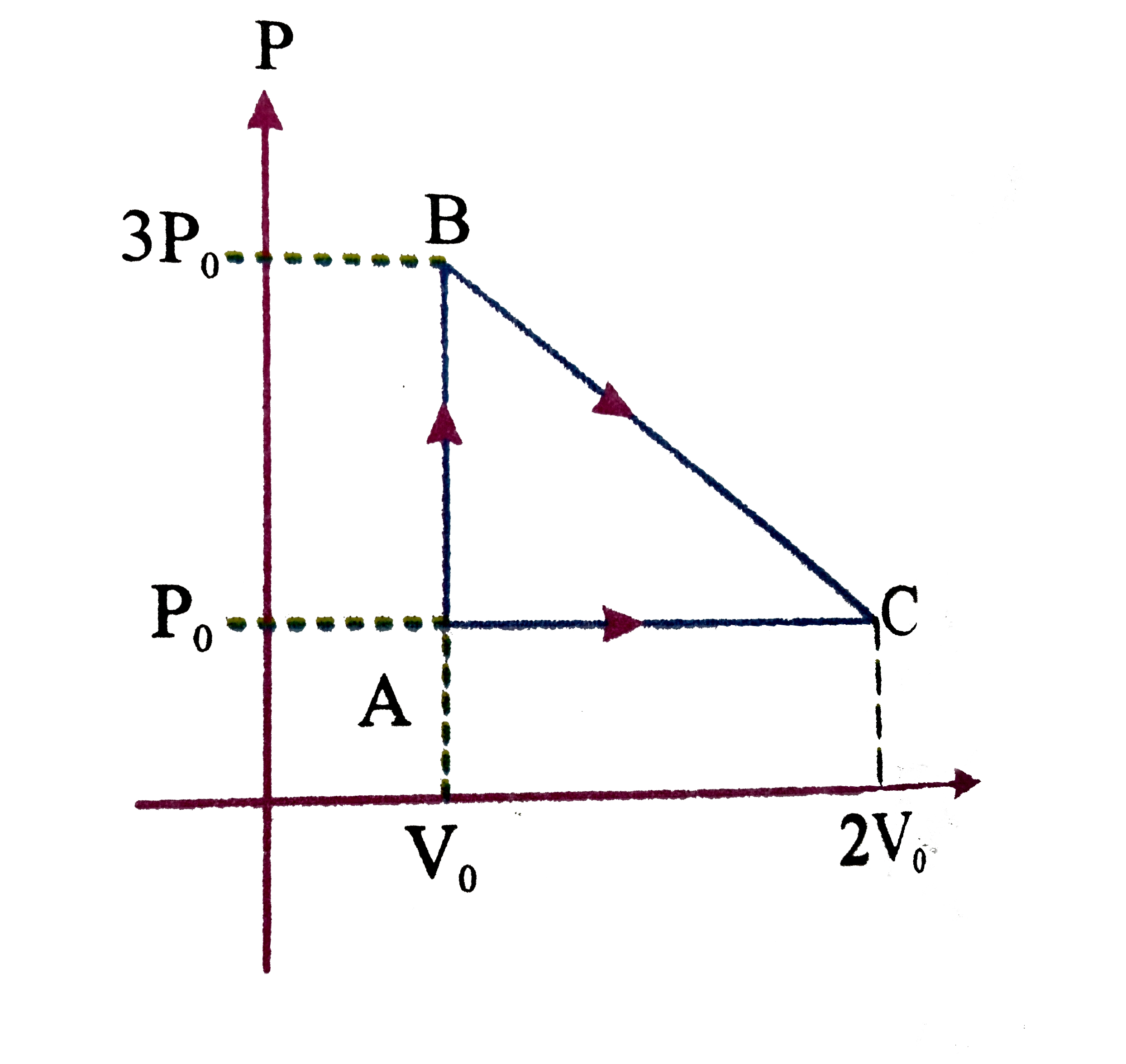
the work doen by the gas
the heat rejected by the gas in the path and the heat absorbed by the gas in the path
the net heat absorbed by the gas in the path ,
the maximum temperature attained by the gas during the cycle.
The correct Answer is:A, B, C, D
is a clockwise cyclic process.
Work done by the gas
Area fo triangle
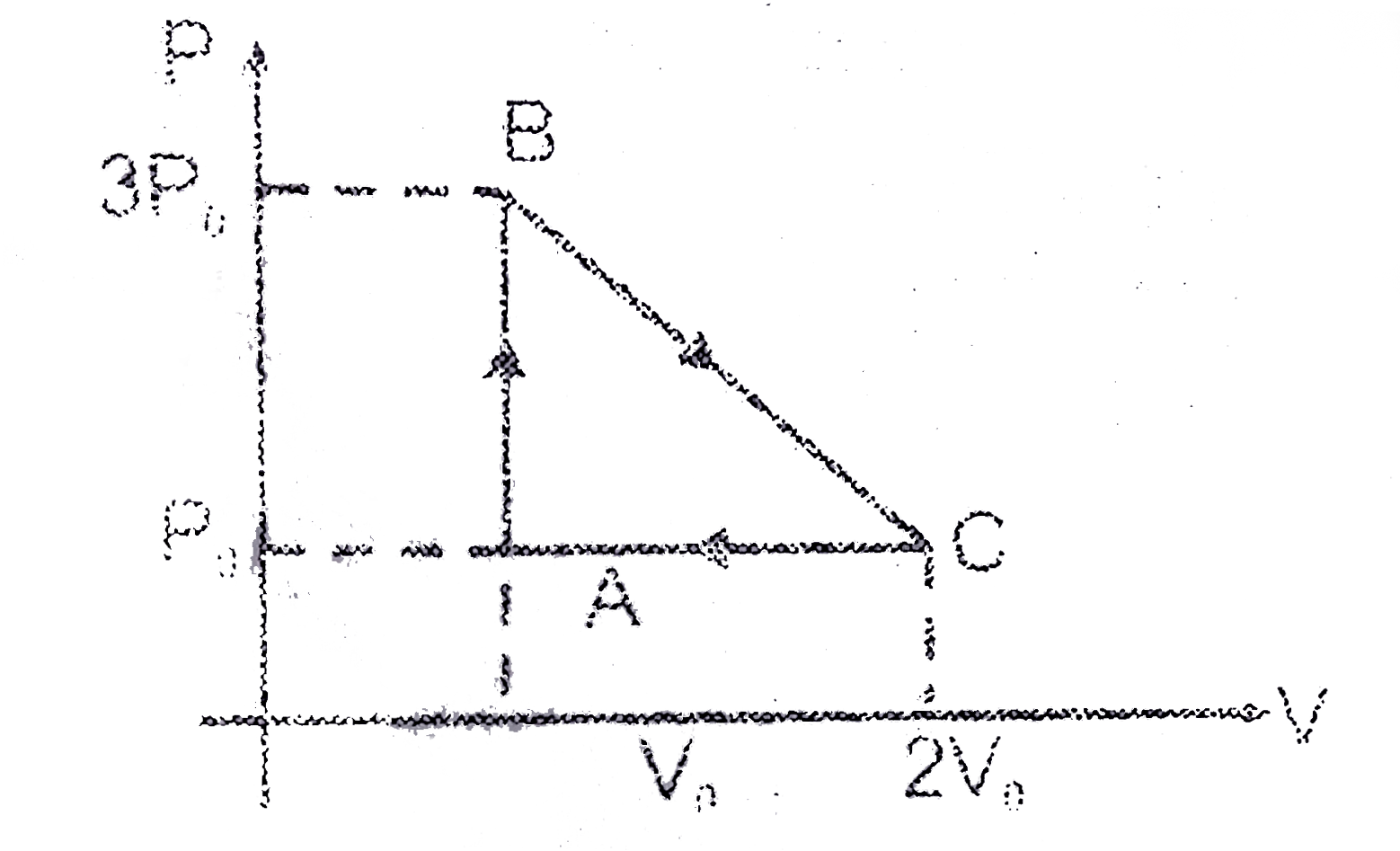
(b) Number of moles and gas monoatomic, therefore
and
and
Heat rejected in path (process is isobaric)
Subsituting the values
Therefore, heat rejected in the process is
Heat absorbed in path (process is isochoric)
.
Heat absorbed in the process is
(c) Let be the heat absorbed in the process ,
Total heat absorbed,
Change in internal energy,
Heat absorbed in the process is
(d) Maximum temperature of the gas will be somewhere between and . Line is a straight line. Therefore equation for the process can be written as:
Here and
Multiplying the equation by .
or
For to be maximum,
i.e at , (on line temperature of the gas is maximum. From equation (1), this maximum temperature will be
Related Playlists
- BOOK - RESONANCE ENGLISHCHAPTER - KTG & THERMODYNAMICSEXERCISE - Advancel Level Problems1videos
KTG & THERMODYNAMICS
- BOOK - RESONANCE ENGLISHCHAPTER - KINETIC THEORY OF GASES AND THERMODYNAMICSEXERCISE - Exercise64videos
KINETIC THEORY OF GASES AND THERMODYNAMICS
- BOOK - RESONANCE ENGLISHCHAPTER - MAGNETIC FIELD AND FORCESEXERCISE - Exercise64videos
MAGNETIC FIELD AND FORCES
Similar Questions
One mole of an ideal monatomic gas is taken round the cyclic process ABCA as shown in figure. Calculate
(a) the work done by the gas.
(b) the heat rejected by the gas in the path CA and the heat absorbed by the gas in the path AB,
(c) the net heat absorbed by the gas in the path BC,
(d) the maximum temperature attained by the gas during the cycle. View Solution
View SolutionOne mole of an ideal monatomic gas is taken round the cyclic process ABCA as shown in figure. Calculate

(a) the work done by the gas.
(b) the heat rejected by the gas in the path CA and the heat absorbed by the gas in the path AB,
(c) the net heat absorbed by the gas in the path BC,
(d) the maximum temperature attained by the gas during the cycle.View SolutionOne mole of an ideal mono-atomic gas is taken round cyclic process ABCD as shown in figure below. Calculate work done by the gas.
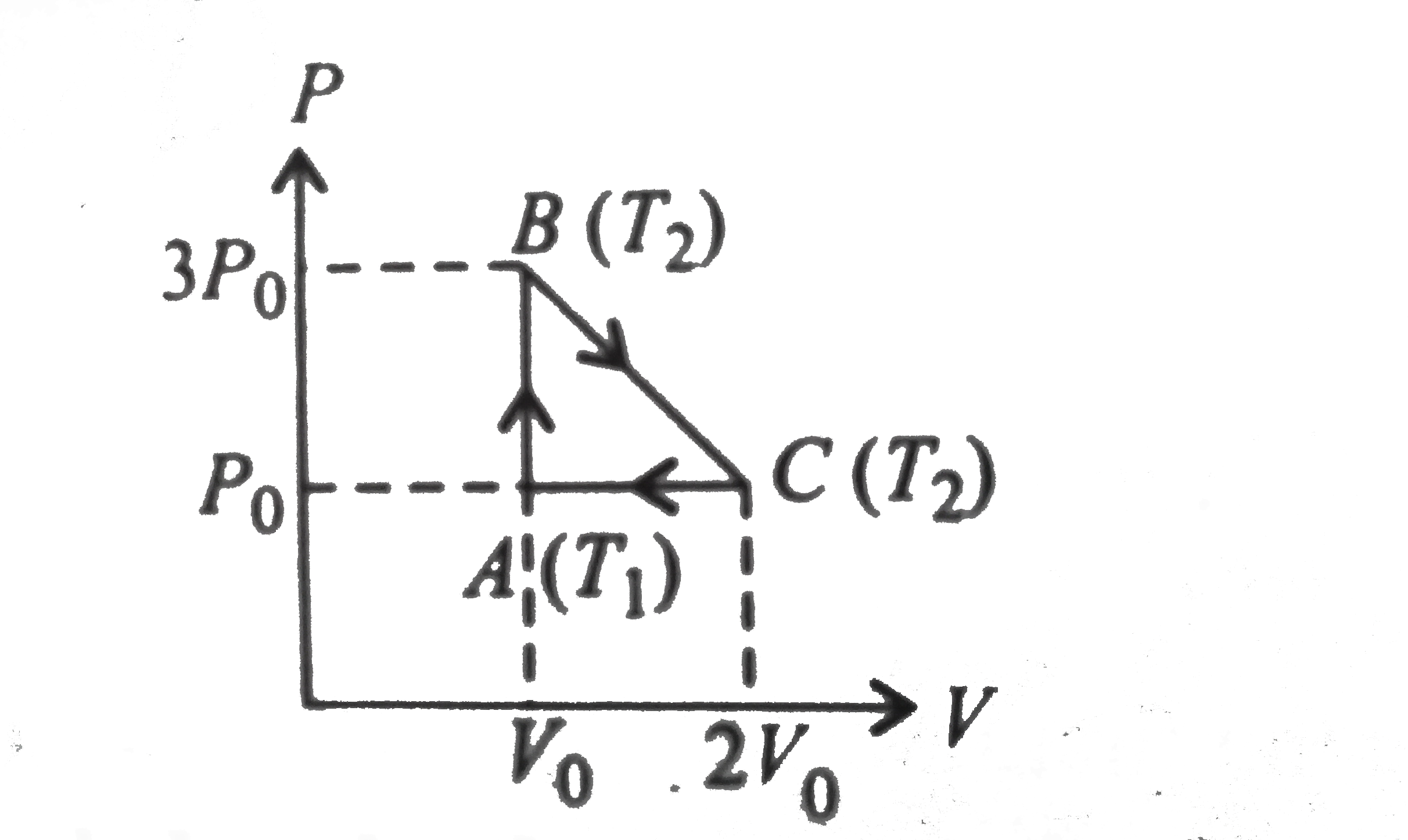 View Solution
View SolutionOne mole of an ideal mono-atomic gas is taken round cyclic process ABC as shown in figure below. Calculate work done
 View Solution
View SolutionOne mole of an ideal mono-atomic gas is taken round cyclic process ABC as shown in figure below. Calculate work done
 View Solution
View SolutionOne mole of ideal monoatomic gas is taken round the cyclic process as shown in figure.

The heat rejected by the gas in the path CA is ………...and the heat absorbed by the gas in the path AB is ………...........View SolutionOne mole of an ideal monoatomic has is taken through cyclic process ABC as shown in the graph with pressure and temperature as coordinate axes. Process AB is defined as PT = constant. Take universal gas constant to be R. Then:

Change in internal energy of gas in the process CA isView SolutionOne mole of an ideal monoatomic has is taken through cyclic process ABC as shown in the graph with pressure and temperature as coordinate axes. Process AB is defined as PT = constant. Take universal gas constant to be R. Then:
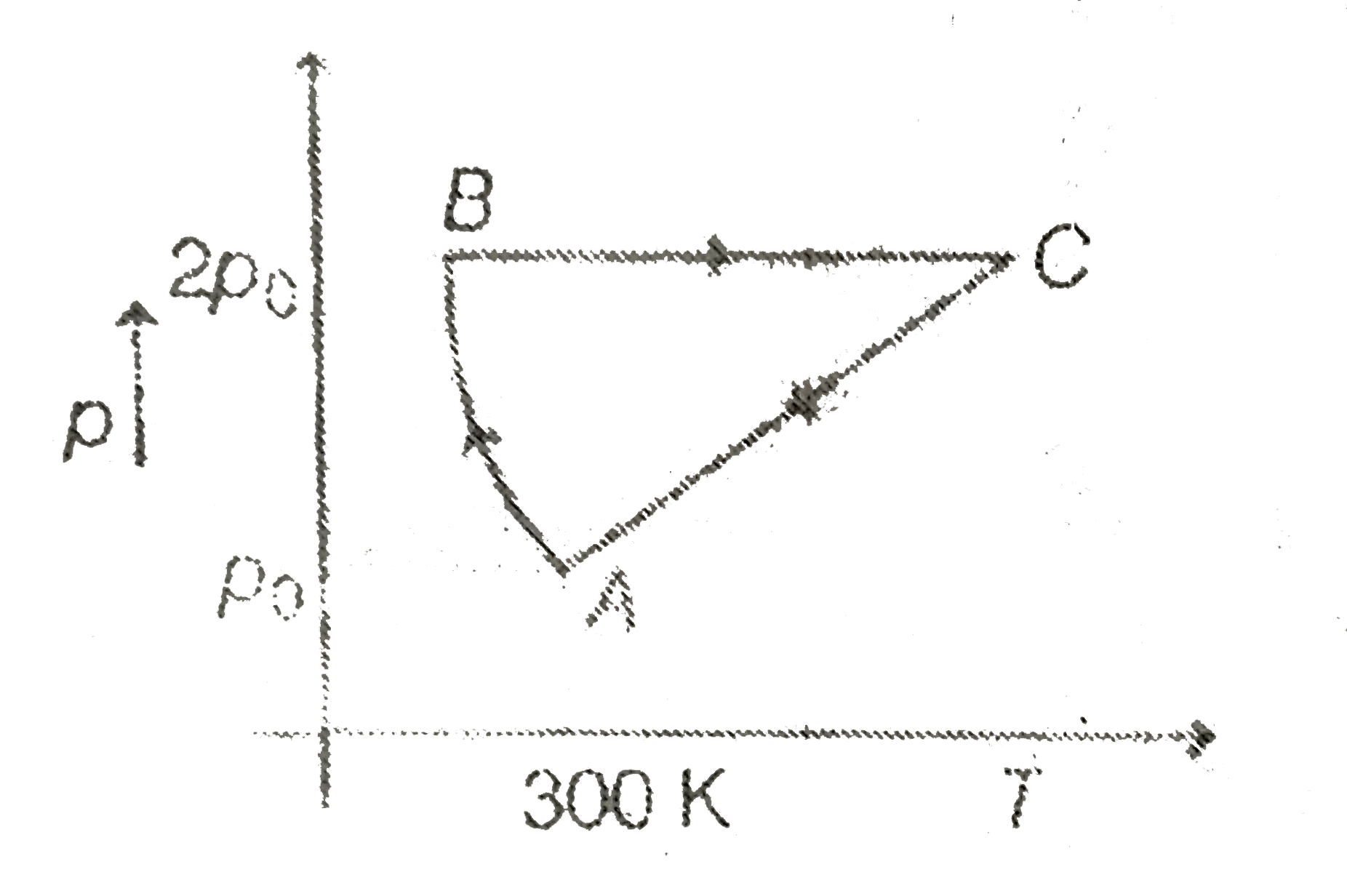
work done on gas in the process AB isView SolutionOne mole of an ideal monoatomic gas is taken through a cyclic process as shown. Choose the correct option(s).
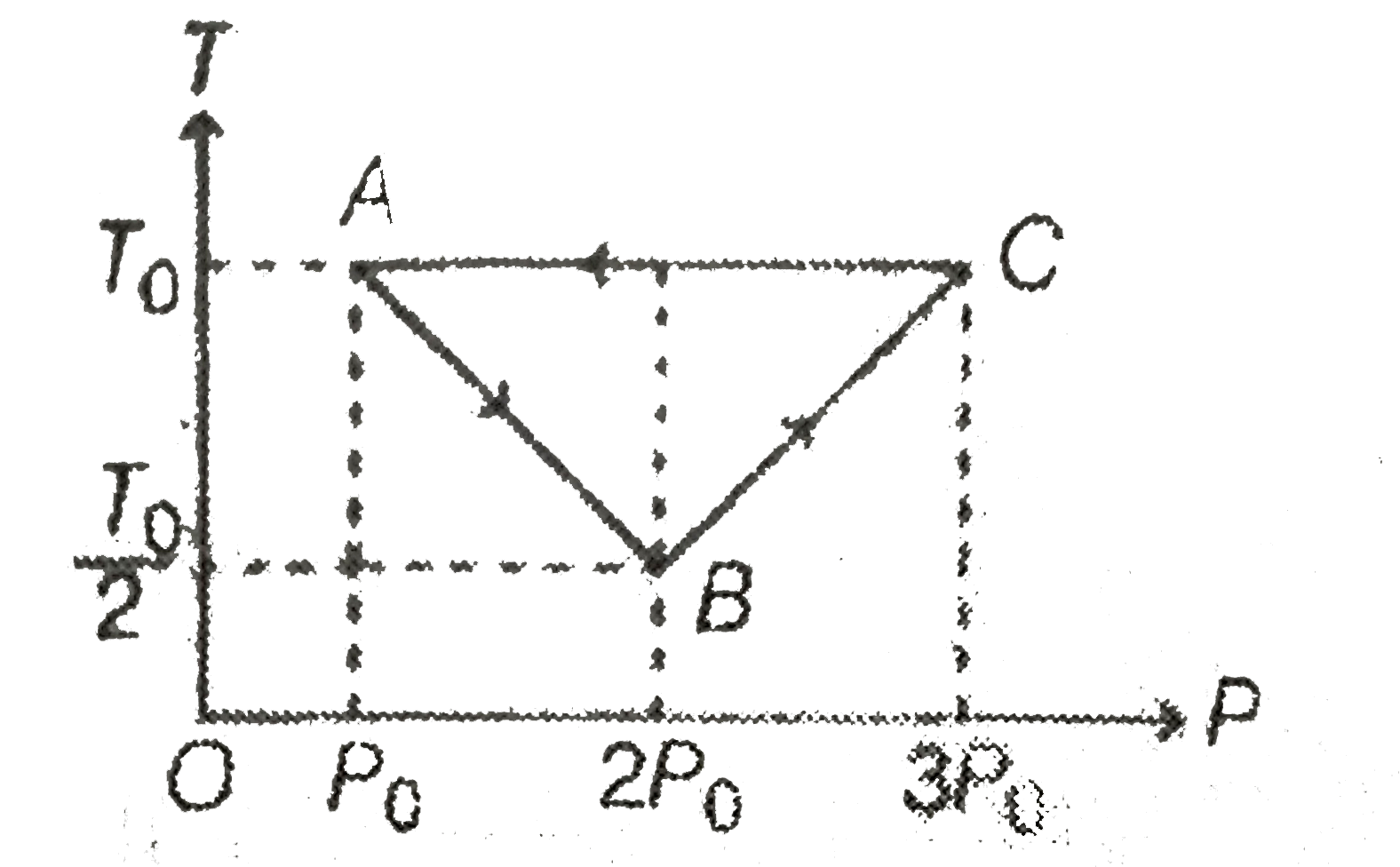 View Solution
View SolutionA sample of an ideal monoatomic gas is taken round the cycle ABCA as shown in the figure the work done during the cycle is
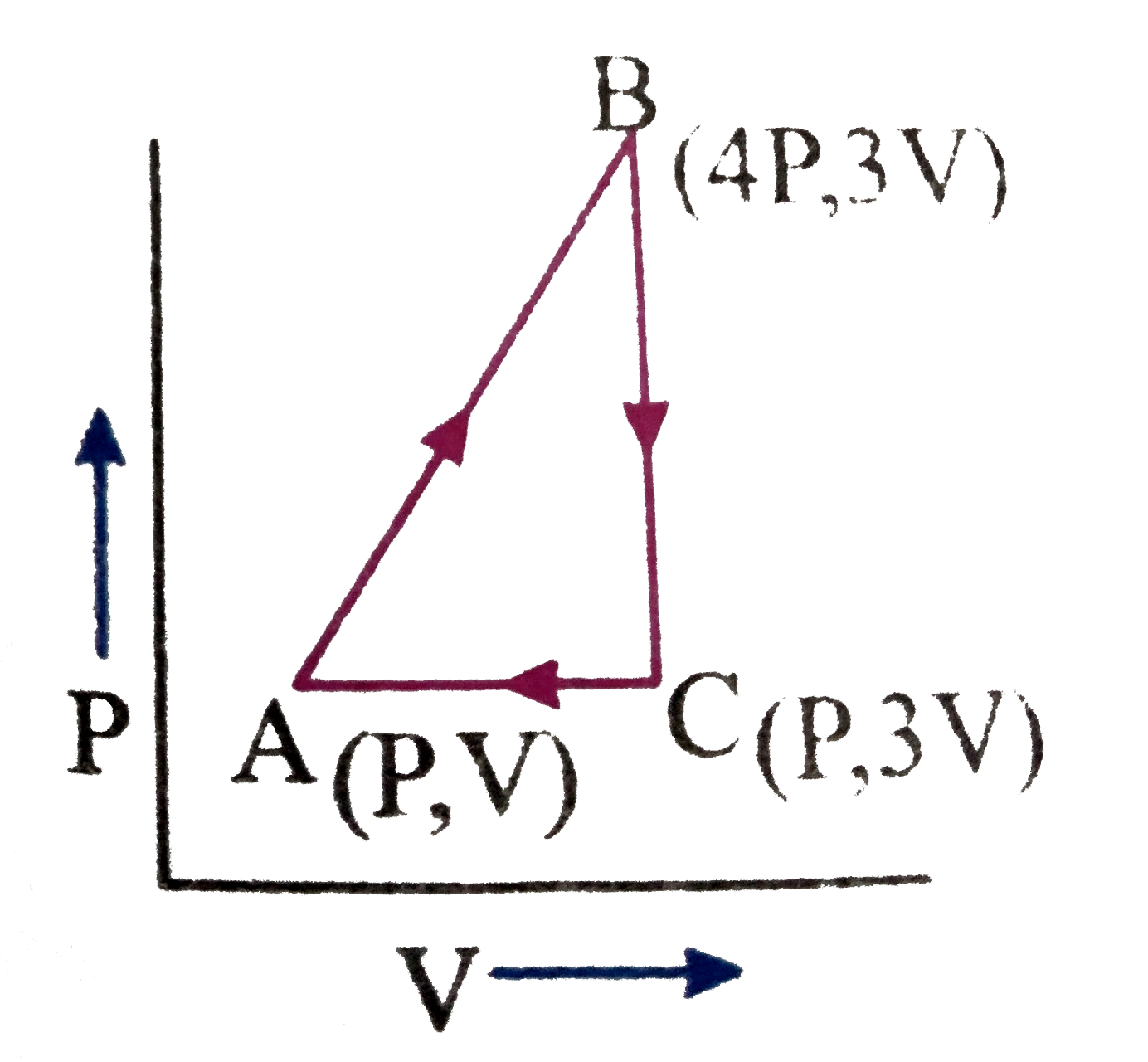 View Solution
View Solution

